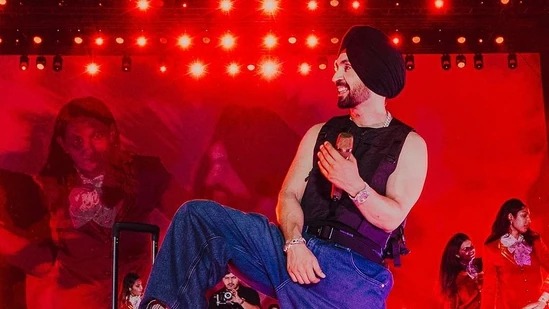In recent weeks, a significant incident at a Diljit Dosanjh concert in Delhi has sparked widespread discussions about event management, crowd control, and safety protocols at large public gatherings. A concert that should have been a celebration of music and culture turned into a scene of chaos, highlighting serious lapses in planning and execution. Reports indicate that the concert, held in a packed venue, faced a range of issues from overcrowding to inadequate medical support. Eyewitness accounts revealed that a girl in the audience collapsed, allegedly due to the overwhelming conditions in the venue. This incident was not an isolated event; it raised alarms about how such large-scale events are managed, particularly regarding the safety and wellbeing of attendees. Diljit Dosanjh, a popular Punjabi singer and actor, draws huge crowds, and his concerts often feature fans from diverse backgrounds, all united by a love for his music. The enthusiasm surrounding his performances is immense, but with this popularity comes the responsibility of ensuring that the event is conducted safely and effectively. In this particular instance, the venue’s capacity seemed to have been exceeded, leading to dangerously crowded conditions. Attendees reported feeling cramped, with many struggling to move freely. Such environments can lead to panic, anxiety, and in extreme cases, medical emergencies, as seen in the incident where a young girl passed out. Eyewitnesses have shared their experiences of the night, painting a vivid picture of the chaos. Many described the atmosphere as electric but quickly turned alarming as people began to feel suffocated. Reports indicate that the security personnel were overwhelmed, unable to manage the throngs of fans attempting to enter and exit the venue. One concert-goer recounted, “It felt like we were packed like sardines. There was no space to breathe, and when the crowd surged forward, it became terrifying.” This sentiment was echoed by several others, who felt that the excitement of the concert turned into a fight for survival. A critical aspect of event management is having adequate medical support on-site. In this instance, the absence of visible medical personnel became glaringly apparent when the girl collapsed. Concert-goers reported delays in getting help, exacerbating an already tense situation. Emergency response protocols dictate that medical teams should be on standby during large events to address health crises swiftly. However, the apparent lack of preparation raised serious concerns. In situations where the crowd density is high, even minor incidents can escalate quickly, leading to serious health risks.
Delhi man reveals mismanagement at Diljit Dosanjh concert: ‘A girl passed out’
Effective crowd control is essential in preventing such situations from occurring. This includes proper entry and exit strategies, clear communication with attendees, and trained security personnel. In this case, the concert appeared to lack a cohesive plan to manage the influx of fans. Reports suggest that attendees were not informed about entry times or security protocols beforehand, leading to confusion and frustration. Proper signage, staff training, and crowd flow management could have significantly mitigated the issues faced during the concert. The incident has sparked conversations about accountability in the event management industry. Who is responsible for ensuring the safety of concert-goers? Is it the artists, the promoters, or the venue management? In many cases, it is a combination of all three, and each must play their part to prevent tragedies. This concert has become a case study for future events, emphasizing the need for stringent safety measures. Organizers must prioritize crowd safety, medical readiness, and overall attendee experience. Ignoring these aspects not only endangers lives but also tarnishes the reputation of the artists involved and the industry as a whole. In the aftermath of such incidents, fans and community members often rally together to seek change. Social media platforms have been flooded with discussions about concert safety, with many calling for better regulations and standards for live events. This collective voice can drive meaningful changes, urging organizers to take safety more seriously. The mismanagement witnessed at the Diljit Dosanjh concert in Delhi serves as a stark reminder of the importance of safety in large public gatherings. As the music industry continues to grow, so does the need for robust systems that prioritize the health and safety of fans. While the incident may have been an isolated occurrence, it highlights systemic issues that, if not addressed, could lead to more severe consequences in the future. It is essential for all stakeholders—artists, promoters, venues, and fans—to collaborate in creating an environment where everyone can enjoy live music safely. Concerts should be celebrations, not sites of distress, and it is imperative that lessons learned from this event lead to meaningful changes in the industry. As fans continue to advocate for their safety, the hope remains that the music community will heed their calls, fostering a culture where every concert is a safe and joyous occasion for all.
